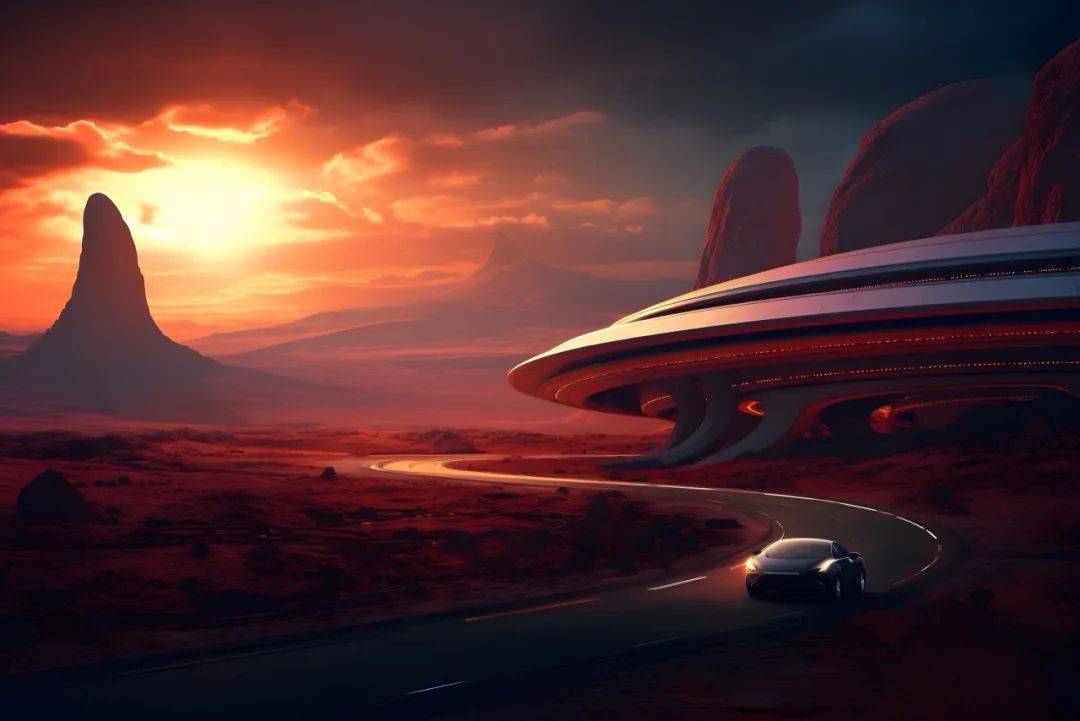
“Earth is humanity’s cradle, but one cannot remain in the cradle forever…”
By Quan Yi and Li Xi Yin
Edited by Li Xi Yin
The Silicon Valley Iron Man’s ultimate goal to safely and conveniently colonize other planets has now taken another step forward.
On March 14th, local time, Space Exploration Technologies Corp. (SpaceX) launched the third test of its Starship, the largest and most powerful rocket ever built to date.
The Starship rocket tested is the largest humanity has ever constructed. It consists of two reusable stages: the first, a booster known as Super Heavy equipped with 33 Raptor engines; and the second, a 50-meter-tall spacecraft named Starship.
All 33 engines ignited without issue during liftoff. However, about an hour after launch, the SpaceX Starship lost contact, suggesting a potential disintegration. Prior to this incident, SpaceX founder Elon Musk had announced on social media that “Starship has reached orbital velocity!”
“Although not all planned test objectives were met, SpaceX considered this launch a success,” the company stated in their official announcement. The test achieved several important milestones and breakthroughs for the first time.

SpaceX’s Starship undergoes third test launch – Image source/IC
On March 18th, Elon Musk said on social media that the current Starship is designed for the Solar System, but future versions will shuttle between star systems.
Looking back at SpaceX’s 2023, the company conducted a record 98 launches, creating a new annual record for manned launches; the Falcon 9 rocket had a record-breaking number of uses, becoming the world’s most flown first-stage rocket with 19 successful flights and recoveries. As of now, the number of Starlink satellites in orbit has reached a staggering 5988…
SpaceX continues to break space travel records, bringing humanity closer to the journey across the cosmic ocean and gradually turning the seemingly absurd dream of human space colonization into reality.
Recently, Gwynne Shotwell, SpaceX President and COO, stated at a conference that Starship could launch again within about six weeks. The team is still reviewing data from the last flight, and the fourth test flight will not carry satellites.
From Multiple Failures to Success: Musk’s Philosophy of Embracing Failure
Central to Musk’s dream of colonizing Mars is the Starship, a core element of success or failure.
Starship is a heavy-lift reusable rocket system developed by SpaceX, consisting of a first-stage booster called Super Heavy and the Starship itself on top. It can carry cargo or astronauts to Earth’s orbit, the Moon, Mars, and even further into space, with a projected payload capacity of up to 100 tons. Super Heavy can produce up to 16 million pounds of thrust at full power, far surpassing the Saturn V, which took Apollo astronauts to the Moon.
SpaceX uses a “rapid iteration” and “test-as-you-fly” approach to rocket development, which has earned Starship the moniker of the most powerful rocket built “by explosion”. SpaceX believes in learning how to build better, faster, and cheaper rockets through flight and explosion, rather than solely relying on ground tests and computer modeling. It’s in the continual process of failures and explosions that we see Musk’s philosophy of learning through failure.
Looking at the previous test flights, SpaceX improved and updated through continuous iteration within a year, identifying and rectifying key issues through “failures”.

Public spectating the Starship rocket launch – Image source/IC
During the first test flight on April 20, 2023, the Starship failed to separate from its first-stage booster and started tumbling, leading to the rocket’s detonation within four minutes of ascent. SpaceX later stated that the Starship was equipped with a self-destruct mechanism in case of an anomaly. After undergoing over a thousand modifications, particularly the stage separation heat shield method, where the upper stage’s engines were ignited before separating from the Super Heavy booster, the second test flight was conducted seven months later. Two minutes and forty seconds into the flight, the Starship successfully separated from the Super Heavy booster but then exploded mid-air. Subsequently, the Federal Aviation Administration (FAA) listed 17 corrective actions for SpaceX to implement before the next flight: ten for the Starship and seven for the Super Heavy booster.
SpaceX made significant changes to the Super Heavy-Starship: they upgraded the oxidizer tanks of the booster stage, facilitated the transfer of propellant between the main tank and the smaller header tank that stores landing propellant, and replaced the Raptors’ hydraulic steering system with an all-electric system to improve reliability.
SpaceX has tested the payload bay doors of the Starship to ensure future smooth deployment of satellites into orbit. The preliminary report from SpaceX also indicated that the spacecraft completed a propellant transfer test within its internal fuel tanks, suggesting upcoming in-orbit refueling experiments.
However, there are still many issues to resolve and improvements to make for Starship. For instance, the Starship can endure extreme re-entry temperatures up to 1350°C, but if the heat tiles were to fail, the structural integrity could be compromised due to thermal breach. Ensuring the reliability and process consistency of the vast number of tiles remains one of SpaceX’s challenges.
Musk has publicly stated his long-term goal of moving humanity from Earth to other planets, ensuring the process is both safe and affordable. He mentioned, “If we can get the cost of moving to Mars to around $2 million per person, we can establish a self-sustaining civilization there.”
If Starship becomes operational, it will be the largest and most powerful rocket in human history that’s also reusable, substantially reducing costs. The current international spaceflight rates are around $10,000/kg for cargo and $80 million per passenger; Musk’s rates, if successful, would be $10/kg for cargo and $10,000 per passenger.

Conceptual illustration of a Mars base – Image source/IC
This could mean that humans may reach Mars cost-effectively and efficiently and establish sustainable colonies, making life multi-planetary—a true realization of Musk’s Mars dream.
How Far Are We from Colonizing Mars?
From a commercial and economic perspective, space colonization can create abundant opportunities. Space exploration and development can foster technological innovation and industrial growth, driving employment and economic expansion.
According to a report by the Space Foundation, a U.S. space industry group, the global space economy grew by 8% in 2022, reaching $546 billion, with an expected additional 41% growth over the next five years. The European consultancy Euroconsult’s “Space Economy Report 2022” showed that the global space economy rose by 8% to $464 billion in 2022 compared to the previous year.
The “Father of Rocketry,” Konstantin Tsiolkovsky once said, “The Earth is the cradle of humanity, but mankind cannot stay in the cradle forever.”
Many visions for space cities have been proposed by scientists. One American plan envisions a rotating cylinder that could house approximately 10,000 residents. Another envisages a wheel-shaped, rotating space city with a comfortable and perennial spring-like environment.
Space colonization offers scientists a unique setting for research. NASA believes that microgravity could help scientists better understand the fundamental principles of physics and biology.
Moreover, understanding the formation and evolution of Earth and the origins of life can be enhanced through space colonization. For example, NASA’s space exploration programs enable humans to better comprehend the universe through experiments and observations in space.
Yet, the dream of space colonization remains largely aspirational at this stage. As highlighted in Science, challenges include technical hurdles, economic costs, biological adaptability issues, and ethical concerns.
China’s commercial space industry is also making rapid strides.
In this year’s government work report, the leadership called for the vigorous development of a modern industrial system, acceleration of new productive forces, prioritization of emerging and future industries, and the crafting of growth engines like biomanufacturing, commercial space, and low-altitude economy. For the first time, commercial space was included in the government’s work report as a new growth engine.
In recent years, Chinese private space company iSpace completed a second flight test of its Hyperbola-2 verification rocket at the Jiuquan Satellite Launch Center, assessing the reliability and stability of the Hyperbola-2Y rocket’s recovery features. Landspace carried out vertical takeoff and landing tests with their improved TQ-12 liquid oxygen methane engine on the Zhuque-3 VTVL-1 test rocket, marking success for China’s largest vertical takeoff and landing test rocket to date, designed for no less than 20 reuses.

Successful launch of a Chinese private carrier rocket – Image source/IC
Those in the commercial space sector are well-acquainted with SpaceX’s journey, often expressing admiration for Musk’s daring dreams and the long-term sustenance NASA provided through contracts, which helped SpaceX through its early technical validation phase. They also envy the higher tolerance for setbacks and failures in forward-looking technologies afforded by the capital markets in which SpaceX operates.
Musk believes that any specific technological development can be measured by the number of iterations and the time interval between each iteration. Each launch or test yields experience. Therefore, increasing the frequency of launches and tests is crucial.